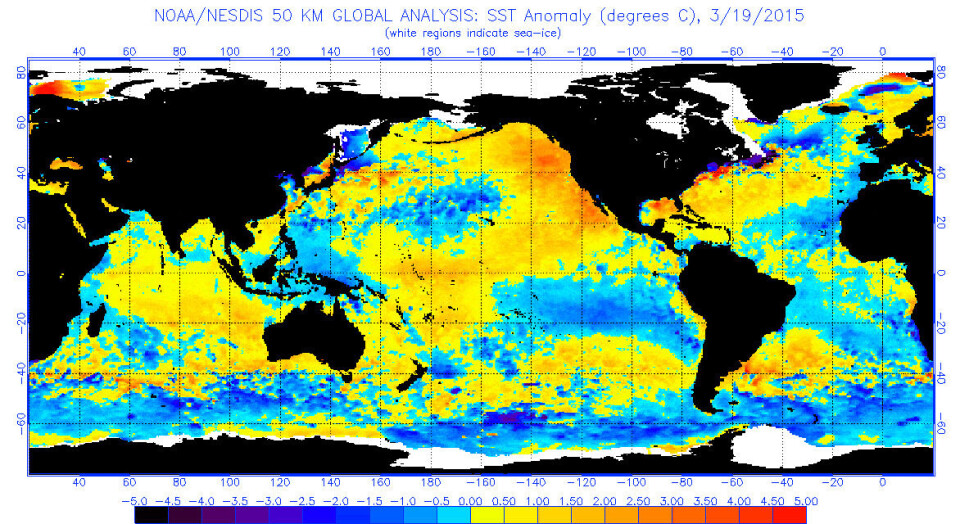
Pacific warming concerns
Earlier this year concerns about El Niño were dominating the discussion about significant events deemed to influence upcoming wild salmon survival and returns. However, this winter also produced a very sparse snowpack along the coast of British Columbia and Washington State, which might lead to warmer water in the rivers where salmon return to spawn - usually by the millions.
Another concern is that this warm water might reduce the supply of nutrients associated with the normal upwelling seen along the Pacific coast - a potential problem possibly reduced by the discharge of nitrogen and phosphorus from coastal fish farms.
Globe and Mail journalist Mark Hume wrote about this US report in an article posted last week that include an interview with Dr Dick Beamish - a Canadian scientist often credited with the first description of acid rain. Here are some of his deliberations:
A report released this week by the U.S. National Oceanic and Atmospheric Administration (NOAA) says a massive “warm blob” of water that is up to 3 C higher than average is spreading south from Alaska. That, together with other environmental factors, could make the ocean less productive for many species, including salmon. The changes are occurring in addition to an El Niño event that developed in the Pacific this winter, and which brought warmer water north from the equatorial Pacific. The warm waters in Alaska developed about one year ago. “We are seeing unprecedented changes in the environment,” Toby Garfield, director of the environmental research division at the U.S. Southwest Fisheries Science Center said in a statement.
The report states that, in addition to higher sea-surface temperatures, there have also been weaker upwellings of cold currents. Those upwellings bring nutrients up from deeper ocean levels, enriching the base of the marine food web. The NOAA report states that last summer and fall, the weights of California sea lion pups were below average in some rookeries, and many pups died, apparently from starvation. “That trend has continued into winter, along with strandings of dead pups. It is possible that another UME [unusual mortality event] will be declared soon in 2015,” the report states.
The NOAA report also says that Cassin’s auklets, especially juveniles, have been dying in large numbers.
Dr. Richard Beamish, an emeritus scientist with the Department of Fisheries and Oceans, said the NOAA study suggests a significant shift of oceanic conditions is taking place. “Some of us, me in particular, believe there are these major climate, ocean events which we’ve been calling regimes,” he said. “We had a major regime shift in ’77 and then in ’89, probably another around 1998 … and since they [are] occurring roughly every 10 years … most of us have been expecting we’d see a change.”
Dr. Beamish said regime shifts can have a dramatic impact on salmon production, causing stocks to crash. But some fish species thrive under warmer conditions, and fish rarely seen off the West Coast can become plentiful. “We could have a bizarre season, perhaps with tuna up as far as Alaska,” he said.






















































